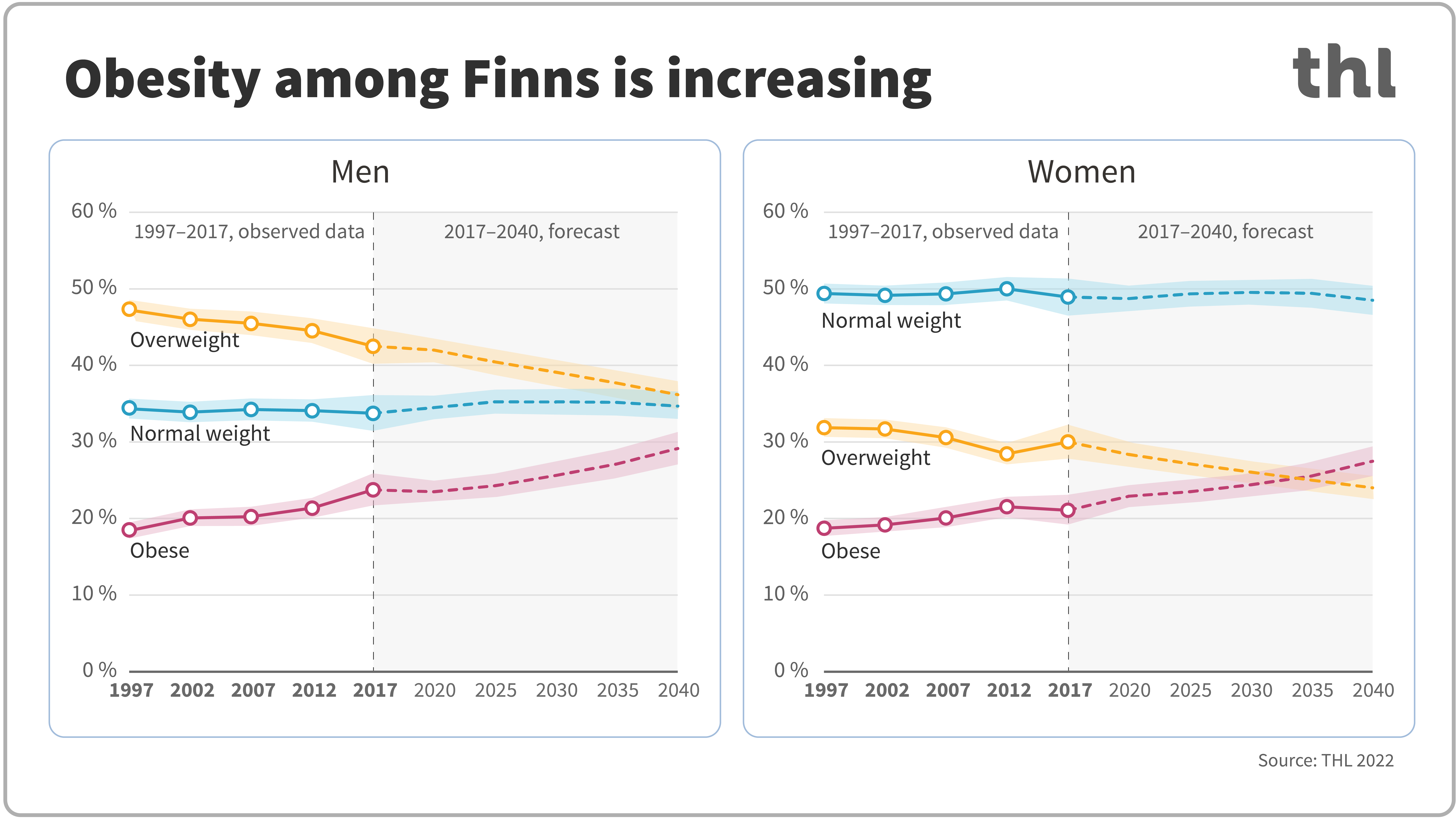Risk factors that expose Finns to chronic diseases have decreased, but obesity continues to increase
The risk factors for Finns contracting many chronic diseases have decreased over the past 20 years. However, obesity is still on the rise and is expected to continue increasing in the coming years. This data is presented in a study done by the Finnish Institute for Health and Welfare, which assessed how the risk factors of the adult population contracting chronic diseases will develop by 2040.
Decrease in smoking, increase in blood pressure and decrease in total cholesterol
Many chronic diseases, such as cardiovascular diseases and several cancers, are based on the same lifestyle risk factors: smoking, low levels of physical activity, excessive alcohol consumption and unhealthy eating habits as well as the resulting increase in blood pressure and cholesterol levels, obesity and diabetes.
According to the study, risk factors for chronic diseases have increased and will continue to do so in the future as follows:
- Obesity has increased over the past 20 years and is expected to continue. The increase in obesity is mainly due to an increase in weight among those who are already overweight, not those who are of normal weight.
- The percentage of regular smokers has decreased steadily and is expected to continue decreasing. However, according to forecasts, the national target of only 5% of the population using tobacco products in 2030 will not be achieved.
- The percentage of people engaging in little physical activity has remained almost unchanged, and no major change is expected by 2040.
- Both elevated blood pressure and total cholesterol have decreased over the past 20 years, and the decrease is expected to continue until 2040.
- Diabetes is likely to become more common as obesity increases. However, the forecast is uncertain due to the limited amount of data.
"According to the results, the risk factors of key chronic diseases vary in both directions. A reduction in smoking and a decrease in blood pressure and total cholesterol levels also have a positive impact on the morbidity of chronic diseases,” says Research Programme Director Hanna Tolonen of THL.
"However, the continuous increase in obesity is a cause for concern. If weight increases among those already overweight, it is likely to affect the spread of, for example, diabetes and other diseases,” adds Tolonen.

Body mass indices (BMI) for men and women from 1997 to 2040. The obesity of the adult population is classified based on the body mass index (BMI). BMI is calculated by dividing the weight (kg) of a person by the square of their height (m)2.
- Normal weight: BMI less than 25 kg/m2
- Overweight: BMI 25 kg/m2 or above, but less than 30 kg/m2
- Obese: BMI 30 kg/m2 or above
Forecast data supports disease prevention
The study utilises data collected from national population health examination surveys (FINRISKI and FinHealth) on the development of different risk factors in 1997-2017 and population forecasts made by Statistics Finland.
"The forecast data obtained in the study is important in order for us to be able to react to the morbidity of Finns in time. When people are familiar with lifestyles and the risks they pose to public health, they can be addressed in advance,” says Tolonen.
The study was conducted as part of the “Projections of the burden of disease and disability in Finland – health policy prospects” project, which was funded by the Academy of Finland.
Further information
Hanna Tolonen
Research Programme Director
Finnish Institute for Health and Welfare (THL)
[email protected]
+358 (0)29 524 8638



